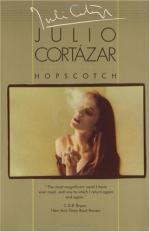|
This section contains 214 words (approx. 1 page at 400 words per page) |

|
Cortazar has been influenced by many philosophical, scientific, literary, and artistic theories: Bergson's "elan vital" and Sartre's Existentialism; Planck's quantum theory and Einstein's theory of relativity; Surrealism, the Theater of the Absurd, Neo-realism, Vanguardism, Cubism, Futurism, and Pop Art, make up the creative milieu out of which he creates his own deeply personal world view. Hopscotch, in many instances, borrows directly from his knowledge of Zen Buddhism. At times, Cortazar resembles a literary Roshi (Zen Master) whose goal goes beyond novelistic creation. Cortazar has said that to write is to create his mandala from which he hopes to achieve enlightenment. He also hopes to challenge his readers to struggle for enlightenment. By searching through the "many books" that make up Hopscotch, Cortazar hopes his readers might encounter their spiritual center.
One of the many possible books in Hopscotch appears in seminal form in chapter sixty-two. Here...
|
This section contains 214 words (approx. 1 page at 400 words per page) |

|




